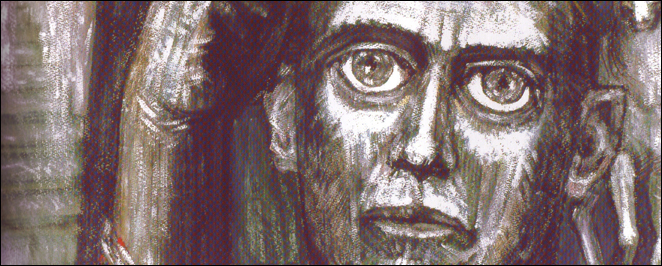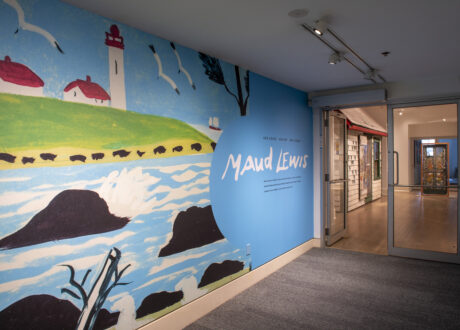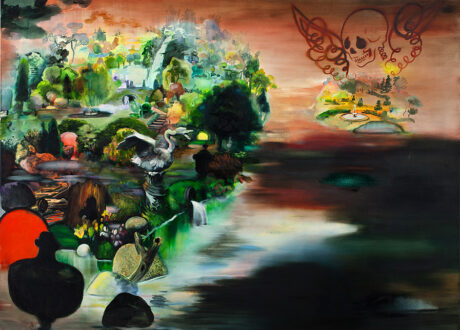

Organized and circulated by: the Beaverbrook Art Gallery
A man who has learned discrimination in art has got himself [a] treasure which will always be a source of happiness and which financial reverses or war or the cussedness of his fellow man cannot take away from him.
Miller Brittain, 1949
This retrospective exhibition was organized by Fredericton’s Beaverbrook Art Gallery, and curated by Tom Smart. Miller Brittain: When the Stars Threw Down Their Spears celebrates the artistic legacy of one of New Brunswick’s most talented artists.
Miller Brittain’s life as an artist is defined partly by the large and diverse body of drawings and paintings that trace a course of self examination, interpret the life and people around him, and probe his spiritual and emotional landscapes.
Brittain (1912-1968) was a figurative artist at a time when landscape painting of the Group of Seven and their followers held sway in Canadian art. He studied at New York’s Art Students’ League between 1930 and 1932 where he developed his artistic voice. He was interested in depicting his immediate environment, and this direction led him to create dynamic social realist paintings of his native Saint John when he returned home from New York.
From the 1930s to the early 1940s, Brittain created portraits, satirical drawings, and cartoons – large-scale drawings for murals. A promising artistic trajectory was interrupted in 1942 when he enlisted in the Royal Canadian Air Force; he spent two years in training and on active duty as a bomb aimer, and then as an official war artist. His experiences during the war led to the development of three symbolic devices and motifs that were often repeated in his post-war work: the radiant burst, the vertical shaft or spear, and a trailing plume.
In June 1946, Brittain, a decorated veteran, returned home to Saint John and established a studio. During this time, up until 1951, he interpreted biblical stories almost to the exclusion of all other subject matter. He was also deeply influenced by the English poet, watercolourist, and printmaker William Blake, and as a figurative artist to England’s Henry Moore. He modelled himself after Gulley Jimson, the fictional artist and soothsayer in Joyce Cary’s novel The Horse’s Mouth.
After his wife’s death in 1958, Brittain turned to a violently distorted manner of describing the figure. His compositions were often wildly imaginative tableaux of nudes. Trial, error, and absurdity define the work of Brittain’s last decade. He continued to experiment with gesture and form, and to transform the orb and trail motif. By 1962 Brittain was exploring its possibilities in drawing after drawing of flowers – some in pots, and others in bouquets. They held all possible meanings simultaneously in a taut visual tension as the floral motif morphed into many different incarnations.
Ordinary urban narratives, New Testament parables, figurative abstractions, and variations on organic metaphors, all contribute to the wide iconography of an artist who constantly pushed himself into new, perhaps dangerous, creative territory.
Miller Brittain: When the Stars Threw Down Their Spears is accompanied by a book co-published by the Beaverbrook Art Gallery and Goose Lane Editions.



